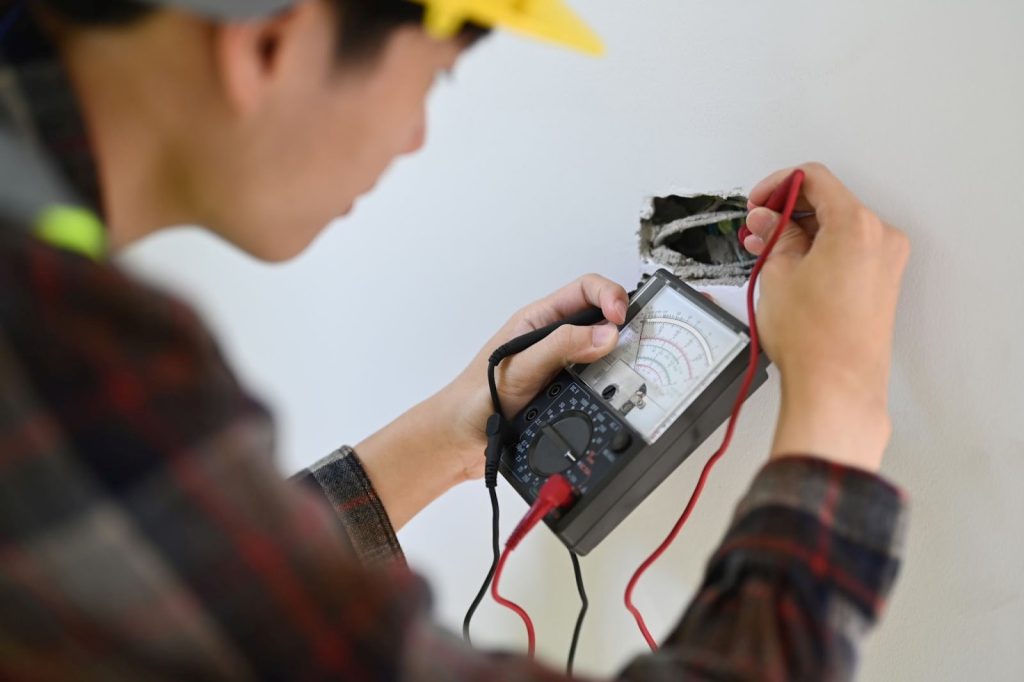Portable Appliance Testing (PAT) is a crucial aspect of ensuring electrical appliance safety in various settings. However, concerns may arise about whether PAT testing can potentially damage the very appliances it aims to safeguard. This guide explains what PAT testing is, the legal requirements and the advantages associated with this safety measure.
What is PAT Testing?
Portable Appliance Testing (PAT) is a systematic process that involves checking electrical appliances for safety. The primary objective is to identify potential hazards and defects that could compromise the well-being of users or damage the equipment. PAT testing encompasses a combination of visual inspections and electrical tests to ensure the safe operation of portable appliances.
The process typically involves a visual examination to identify any obvious signs of damage, followed by electrical tests that assess insulation resistance, earth continuity, and functionality. Regular PAT testing is considered essential for maintaining a safe working environment and preventing electrical accidents.
Professional PAT testing services
Examples of Equipment That Need to be PAT Tested
There are a wide variety of items that require PAT testing. From everyday household appliances which might just need a visual check to larger industrial appliances found in workplaces that require extensive knowledge to assess their safety.
Below are some examples of types of equipment that require a risk assessment and PAT test:
- Vacuum cleaners
- Washing machines
- Hair dryers
- Power tools
- Phones
- Mobile phone chargers
- Electronic equipment
- Industrial machinery
- Lawn mowers
Legal Requirements for PAT Testing
The legal obligation for PAT testing is not explicitly outlined in legislation. However, regulations such as the Electricity at Work Regulations 1989 stipulate that employers must ensure electrical equipment is maintained in a safe condition. This has led to a widely accepted practice of implementing PAT testing as a means of fulfilling this obligation and demonstrating due diligence in ensuring the safety of electrical appliances in various settings.
Who is responsible for PAT testing?
Can PAT Testing Damage My Appliances?
One common concern is whether the PAT testing process itself can cause damage to appliances. In general, when performed by qualified engineers using appropriate testing equipment, PAT testing should not cause damage to electrical appliances. The process is designed to detect existing faults or potential issues, rather than create new problems.
However, it is essential to acknowledge that the testing involves handling and manipulating appliances, which could theoretically result in damage if not conducted with care. Therefore, it is crucial to entrust PAT testing to trained professionals to minimize the risk of unintentional damage during the examination process.
Advantages of PAT Testing
1. Identification of Faults
PAT testing is an effective method for identifying faults in electrical appliances that may not be apparent during regular use. This includes issues with insulation, earth continuity, and internal components that could pose a safety risk.
2. Compliance and Legal Obligations
Conducting PAT testing helps organizations comply with legal obligations related to electrical safety. It provides a tangible demonstration of the steps taken to ensure a safe working or living environment.
3. Prevention of Accidents
Regular testing helps prevent accidents caused by faulty appliances. Identifying and rectifying potential hazards through PAT testing reduces the risk of electric shocks, fires, machine malfunctions, weak power supply, and other safety incidents.
4. Peace of Mind
For both employers and users, knowing that electrical appliances have undergone rigorous testing provides peace of mind. This confidence in the safety of equipment contributes to a secure working or living environment.
Professional PAT Testing Services
At Legionella Risk and PAT, we stand out as providers of comprehensive Portable Appliance Testing (PAT) services, ensuring the safety and compliance of electrical equipment. With a dedicated team of qualified engineers, we conduct meticulous visual inspections and electrical tests on a diverse range of appliances.
Our checks include:
- Inspection of plugs and wiring
- Cable inspections and connection tests
- Identifying continuity and testing it
- Lead polarity checks
- Insulation resistance tests, “electric shock” prevention
With a commitment to excellence, we contribute to the overall well-being of businesses and individuals by providing reliable and professional PAT testing services.
Frequently Asked Questions
Who Can Perform PAT Testing, and Is Training Required?
PAT testing should be carried out by trained professionals with the knowledge to conduct visual checks and use specialized testing equipment. Training ensures competence in identifying potential risks such as faulty wires, metal components, and extension cords. Employers are responsible for ensuring that those conducting PAT testing are adequately trained to perform the task effectively and safely.
How Often Should PAT Testing Be Conducted?
The frequency of PAT testing depends on factors like the type of equipment, its usage, and the environment. While there is no fixed legal requirement for testing intervals, regular assessments are essential to meet the legal responsibility of maintaining a safe working environment. A risk-based approach is often recommended, with more frequent testing for high-risk or heavily used equipment and less frequent testing for low-risk items.


